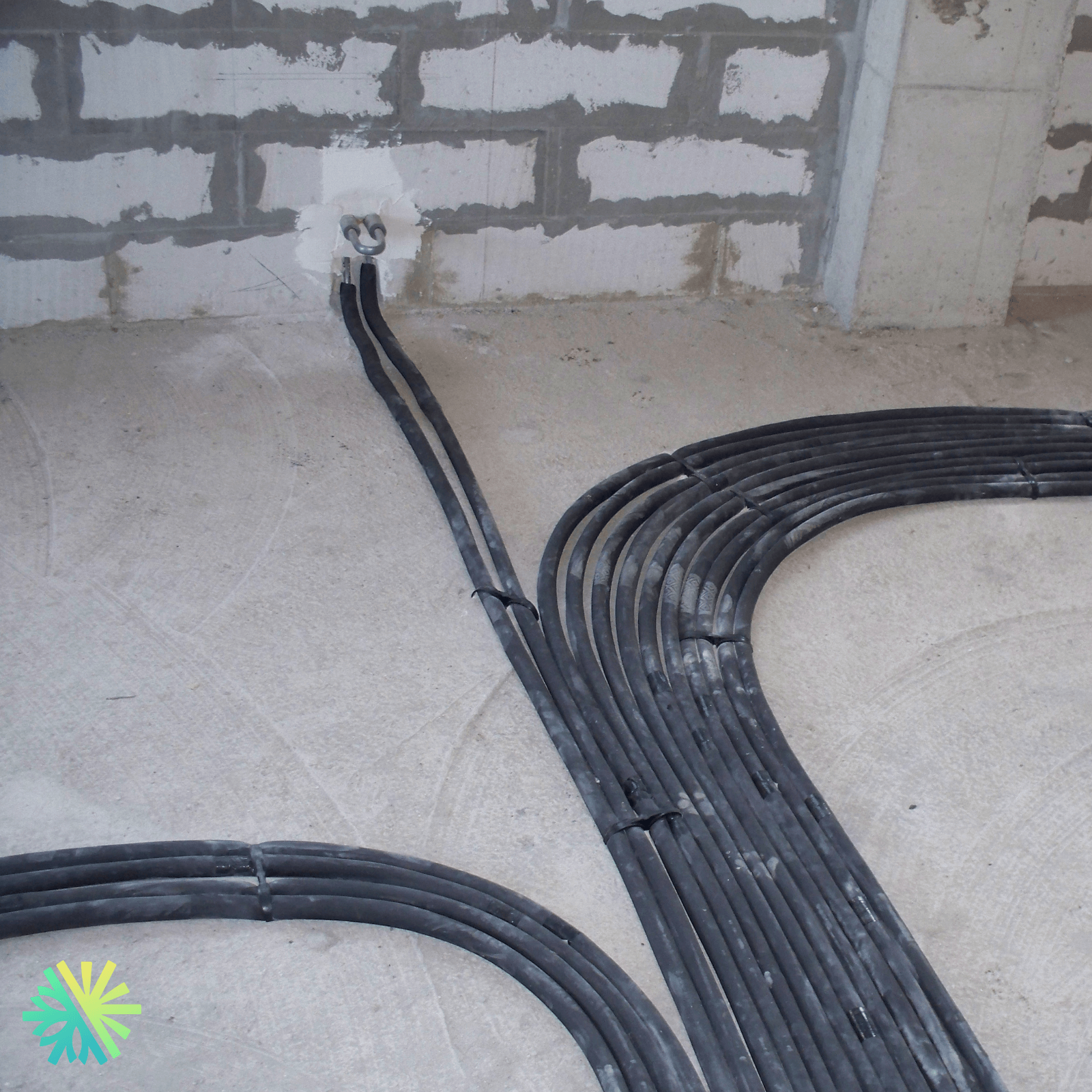Enveloping warmth in the heart of Quebec winter: Radiant heating put to the test in extreme climates
When temperatures drop well below zero and icy winds sweep through Montréal, Laval, Longueuil, the North Shore, and the South Shore, staying warm isn’t just about luxury—it’s about survival. Often associated with upscale homes or sophisticated commercial spaces, radiant heating raises a legitimate question: is it truly a high-end comfort investment, or a necessary and high-performance heating solution for facing Quebec's brutal winters?
At AirGreen, we've installed, repaired, and maintained dozens of radiant heating systems in homes, condos, multi-family units, and commercial buildings across Greater Montréal. In this article, we share real-life experience, technical insights, and expert advice to help answer this essential question.
What is radiant heating? A clear and accessible technical overview
Radiant heating works on a simple yet incredibly effective principle: instead of heating the air, it directly warms surfaces and objects, which then radiate a gentle and consistent warmth. There are several types of radiant systems:
-
Hydronic radiant floor heating (water-based)
-
Electric radiant floor heating
-
Radiant wall or ceiling panels
-
Mixed systems integrated with a central heat pump
These systems offer even comfort, without air movement, noise, or dust circulation. They’re especially appreciated by people with allergies or asthma.
Real benefits of radiant heating in Quebec
Constant and even warmth
Unlike forced-air systems that create uneven heat zones, radiant heating provides uniform temperature across the room. Say goodbye to cold feet in the morning or annoying temperature swings.
Improved energy efficiency
Radiant floors allow you to stay comfortable at lower ambient temperatures, which means reduced energy consumption. When paired with a high-efficiency central heat pump, the system becomes extremely economical.
Silent and invisible solution
No baseboards, radiators, or visible air ducts. The system is built right into the structure, and works silently, making it a top choice for high-end design projects.
Optimal comfort… but at what cost?
It's true that radiant heating installation can come with a higher upfront cost compared to traditional systems. However, this investment is quickly offset by:
-
Significant energy savings
-
Superior long-term durability
-
Added real estate value
-
Unmatched winter comfort
At AirGreen, we recently installed a hydronic radiant floor system combined with a 36,000 BTU Bosch BOVA central heat pump in Longueuil, in a multigenerational home. Thanks to our zoning system, each level now has precise temperature control—and the owners saved 28% on energy in the first year alone.
Installation and integration: what should you expect?
In new construction
Radiant heating is especially advantageous in new builds or major renovation projects. It allows for efficient installation of pipes or heating cables directly in the slab or under the floor.
In renovations
You can also install a thin radiant system over an existing floor or opt for radiant wall panels in specific areas (bathrooms, basements, entryways). We performed this type of installation in a single-family home in Laval where the basement was always hard to heat. The result? A room that’s now usable year-round—without noisy baseboard heaters.
Radiant heating and available grants
Some radiant heating installations combined with a central heat pump qualify for government grants, such as Hydro-Québec’s LogisVert program or Rénoclimat. At AirGreen, we guide every client through the process of evaluating their eligibility for financial assistance.
Who really needs radiant heating in Quebec?
Radiant heating is particularly recommended for the following cases:
-
New homes with concrete slabs (perfect for hydronic floors)
-
Bathrooms and cold basements
-
Homes with high ceilings (where hot air tends to rise and get wasted)
-
Historic homes where discreet solutions are preferred
-
People sensitive to noise or drafts
But beyond specific cases, it all comes down to the level of comfort you want in your home.
Common mistakes to avoid during installation
Poor zoning design
A poorly designed radiant system can lead to overheating in some areas or energy inefficiencies. That’s why we always recommend a complete thermal modeling of your space beforehand.
Choosing the wrong system type
An electric floor in a large house can lead to high utility bills. On the other hand, a poorly insulated hydronic system may respond too slowly. Every project requires a detailed technical analysis, which we always provide at AirGreen.
Customer testimonial: a radically different winter
Mr. Tremblay, a South Shore resident, shares his experience:
“We had a radiant floor installed in our kitchen and main living room by AirGreen. It’s a completely different winter experience. You almost forget it’s -25°C outside. The service was flawless from planning to start-up.”
Why trust AirGreen for your radiant heating project?
-
Recognized HVAC expertise in Montréal, Laval, Longueuil, North Shore, and South Shore
-
Certified technicians trained in both hydronic and electric systems
-
Partnerships with top-tier brands (Bosch, Haxxair, Fujitsu, ACD)
-
Attention to detail, with personalized and responsive after-sales service
-
Complete support for available grants
Conclusion: luxury or necessity?
Based on our field experience, we firmly believe that radiant heating is not a luxury, but a future-proof solution for winter comfort in Quebec. When properly designed, installed, and integrated, it becomes a powerful ally against the cold—with no energy waste or aesthetic compromise.
At AirGreen, we believe every project deserves customized comfort.

